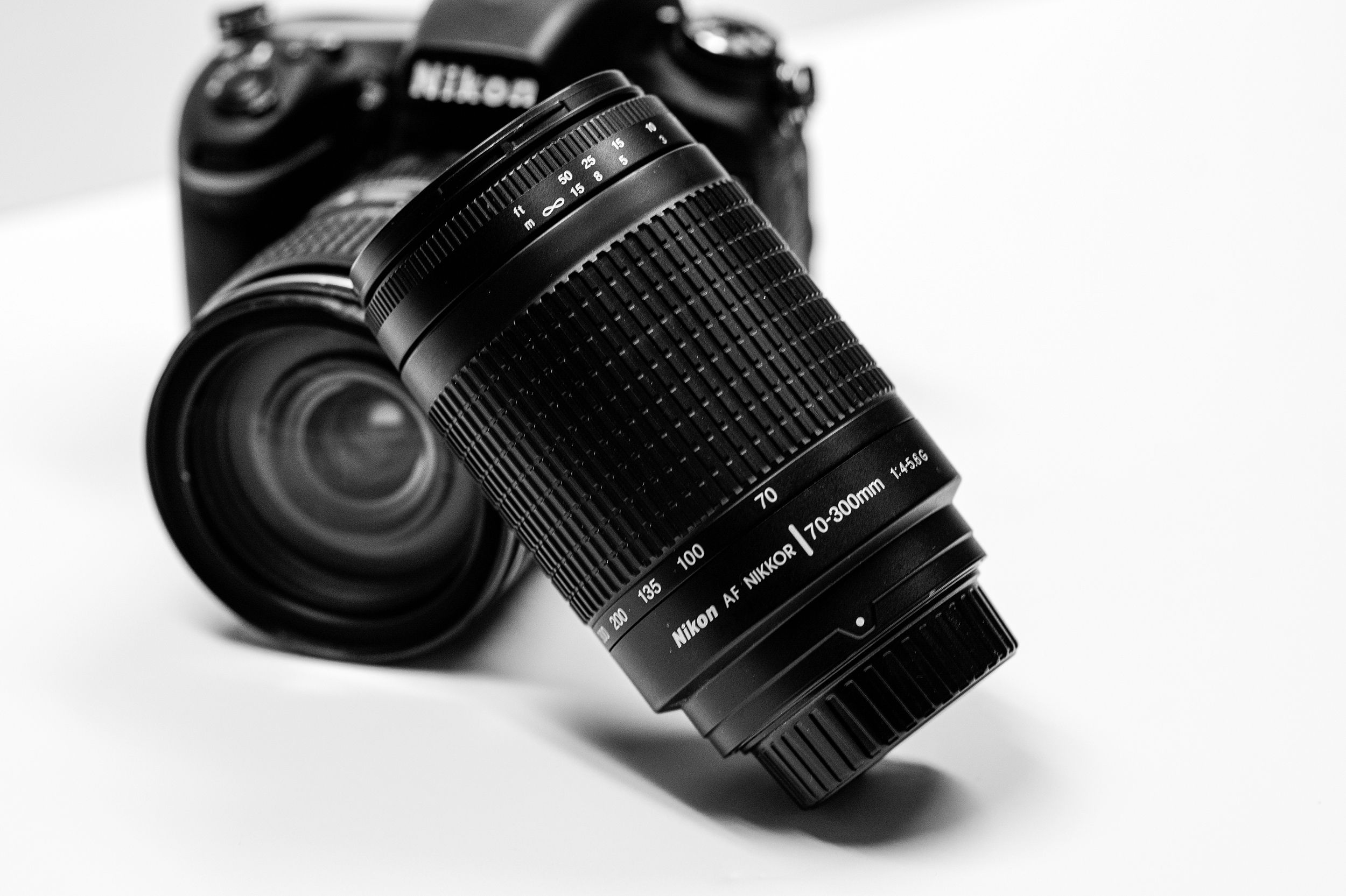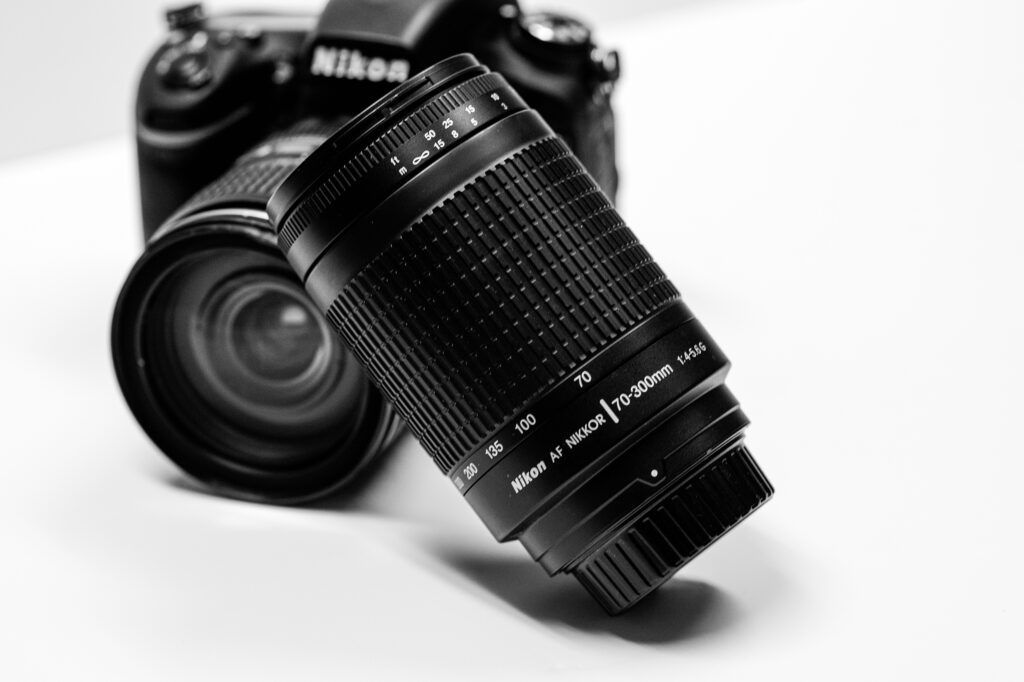Buying lenses for your camera can be an exciting and overwhelming task. There are so many to choose from, but how do you know which ones to invest in and which ones will work the best for you?
There are two general types of lenses for you to choose from zoom lenses and prime lenses. We will focus on zoom lenses in this guide, but we will touch on the differences between a zoom lens and a prime lens. It is important to know the difference between the two and what they both have to offer.
Let’s get started and learn the basics of zoom lenses!
- What is a zoom lens?
- What is focal length and how is it measured?
- What are the differences between a zoom lens and a prime lens?
- What are the advantages of a zoom lens? What are the disadvantages of a zoom lens?
- Deciding which zoom lens is right for you.
Recommended Reading: Want a step-by-step guide on photography skills with your DSLR? Grab a copy of our best-selling guide, the DSLR Crash Course.
What Is a Zoom Lens?
Each zoom lens contains a very complicated set of mechanisms and individual parts that work together to give the photographer the option to change focal lengths. A zoom lens gives us the option to zoom in and zoom out of the scene we want to photograph.
Each zoom lens contains a very complicated set of mechanisms and individual parts that work together to give the photographer the option to change focal lengths.
Key Lesson: Zoom lenses allow us to zoom in and zoom out of a subject or scene we are photographing.
What Is Focal Length and How Is It Measured?
The focal length determines our camera’s angle of view or how much of a scene our camera will capture. We can change the focal length by turning the zoom ring on our lens. Turning one way will make an object in our scene appear larger and turning the opposite way will make that object appear smaller.

This photo was taken with a 24-120mm lens. This building sits empty in my town, and I like seeing the little elements left behind from its former life as a bar and grill. Using the shorter focal length of 24 mm lets me capture what I love most about this building all in one frame. Photograph by Angela Fulks

This photo was taken at the same distance as the previous photo, but at 120 mm instead. Using the longer focal length of 120mm narrowed the angle of view so much that the door and flowerpot became the main focus in my shot. Photograph by Angela Fulks
Focal length is measured in millimeters and is shown at the base of a lens or on the front end of a camera. For example, if you see 18–55mm 1:3.5-5.6 G, you will know that the focal length range of this lens is 18-55mm and that this is a zoom lens.
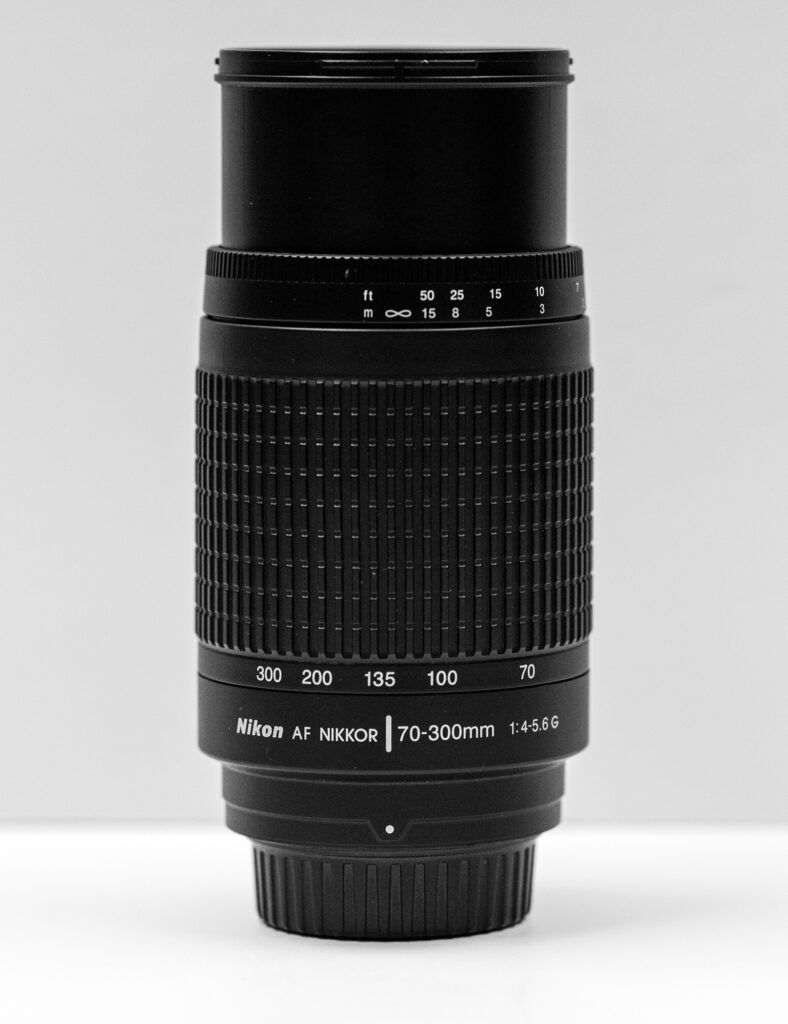
The focal length of this 70-300 mm lens is marked at the base of the lens. Photograph by Angela Fulks
If you were to turn the zoom ring while using an 18-55 mm lens, the camera’s angle of view would change from wider to narrower. The 18 represents a wider angle of view and the 55 represents a shallower angle of view, letting us zoom in on a specific subject in our scene.
Key Lesson: Focal length is measured in millimeters and can be found on the lens body.
Differences Between a Zoom Lens and a Prime Lens
There are a few differences between zoom lenses and prime lenses that are worth keeping in mind. The main difference is that zoom lenses can zoom in on your subject but prime lenses cannot. Prime lenses are made with a fixed focal length. This means it’s not possible to zoom in with a prime lens. The only way for your subject to appear larger in your photo is to physically walk closer to your subject. We learned those zoom lenses have a very intricate set of mechanisms inside that allow the lens to zoom in. Prime lenses are constructed with a much simpler design, giving them some advantages over a zoom lens. They can be lighter to carry, produce photos well in poorly lit conditions, and may not be as expensive as some zoom lenses.

Although I do most of my photographs with my 24-120 mm lens, it is fun to break out the 85mm prime lens to get closer to my subject. Using an 85 mm lens for this forced me to move closer to this pot and photograph the weeds growing from it. Photograph by Angela Fulks
Key Lesson: Zoom lenses allow us to zoom in or out on our subject without moving, but prime lenses do not.
What Are Some Advantages and Disadvantages of a Zoom Lens?
Zoom lenses have a lot to offer a photographer, but like many other things in photography, these advantages may come at a compromise.
Zoom lenses are very versatile. Being able to zoom in and out quickly is helpful for photographers who shoot weddings/events, landscapes, street scenes, and wildlife. Keeping your distance in some situations is important, and using a zoom lens is a great way to capture moments without interrupting the action. Zoom lenses are useful because it’s not necessary to change lenses for a different angle of view. A need for fewer lenses means we can travel lighter and not be weighed down by extra gear.
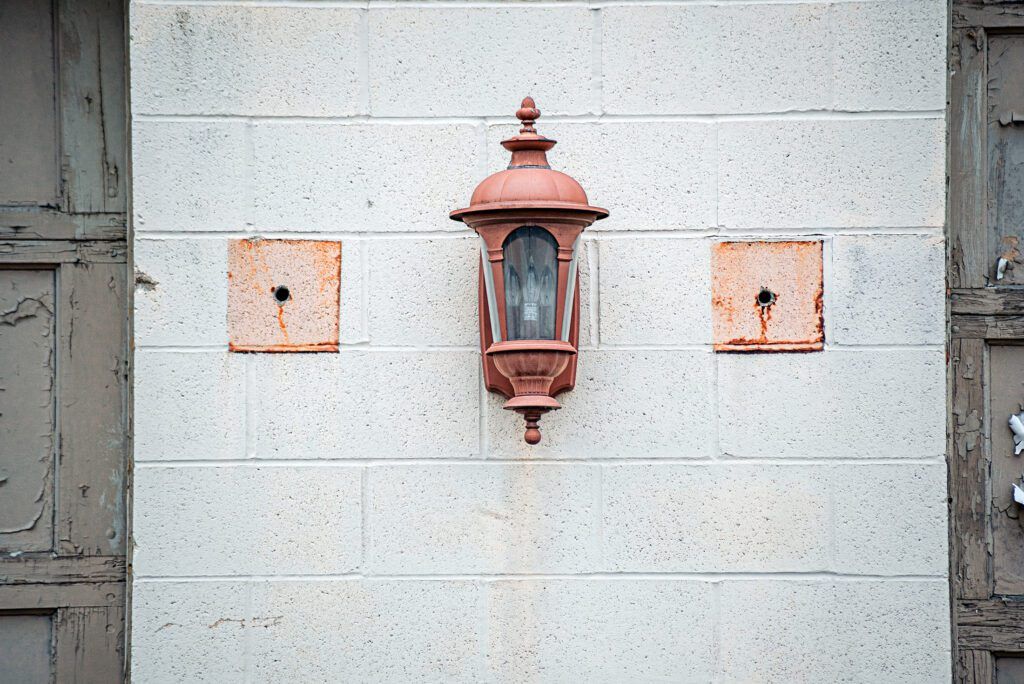
The photo was taken with a 70-300mm lens at 300mm. This photo highlights one of the drawbacks of some zoom lenses: distortion in the final photo. This photo looks like it’s curving away from the viewer (especially noticeable at the edges of the photo). There is an easy way to fix this with editing software, so to me, it’s not a big enough deal to retire this lens. Photograph by Angela Fulks
While there are many advantages to zoom lenses, we must discuss some of the disadvantages. Zoom lenses can be heavy because of their construction. There is a greater chance of something malfunctioning in the lens simply because they are made with so many moving parts. Zoom lenses do tend to be slower and may not perform well in poorly lit conditions.
There is a wide range of zoom lenses on the market, each with different capabilities. The costs for these lenses will vary just as widely as the selection.
Key Lesson: Zoom lenses have a lot of advantages, but also have disadvantages.
Deciding Which Zoom Lens is Right for You
When choosing which zoom lens is right for you, there are many things to consider. First and foremost, consider how you will be using it. As wildlife photographers, some photographers may need to keep physical distance from their subject, so a zoom lens that offers a longer reach will be ideal. Other photographers may need the versatility to change focal lengths quickly and effectively, such as wedding photographers. Others may need to decide strictly on cost and find a zoom lens within their budget. Researching a variety of zoom lenses is an essential factor when deciding which lens will meet your needs and shouldn’t be overlooked.
When choosing which zoom lens is right for you, there are many things to consider. First and foremost, consider how you will be using it.
Some digital cameras come with a “kit lens,” typically an 18-55mm zoom lens. This is a great zoom lens for beginners! It offers a reasonable focal length range and makes it possible to take realistic photos of landscapes and street scenes. It will introduce new photographers to the world of zoom lenses and give them a solid working knowledge for when they are ready to purchase a different lens. It’s tempting to spend more money on lenses right away when buying a new camera; in fact, I know I’ve done it! I learned how much I loved my “kit lens” long after I purchased my first camera because I was so anxious to grow my collection of lenses. I learned a hard lesson, hundreds and hundreds of dollars later: I could’ve happily used my kit lens for a few years while learning about photography had I simply given it a fair shot in the beginning.
Key Lesson: There are a lot of things to consider when deciding which lens will work for you. Research is key!
Recommended Reading: Want a step-by-step guide on photography skills with your DSLR? Grab a copy of our best-selling guide, the DSLR Crash Course.
Conclusion
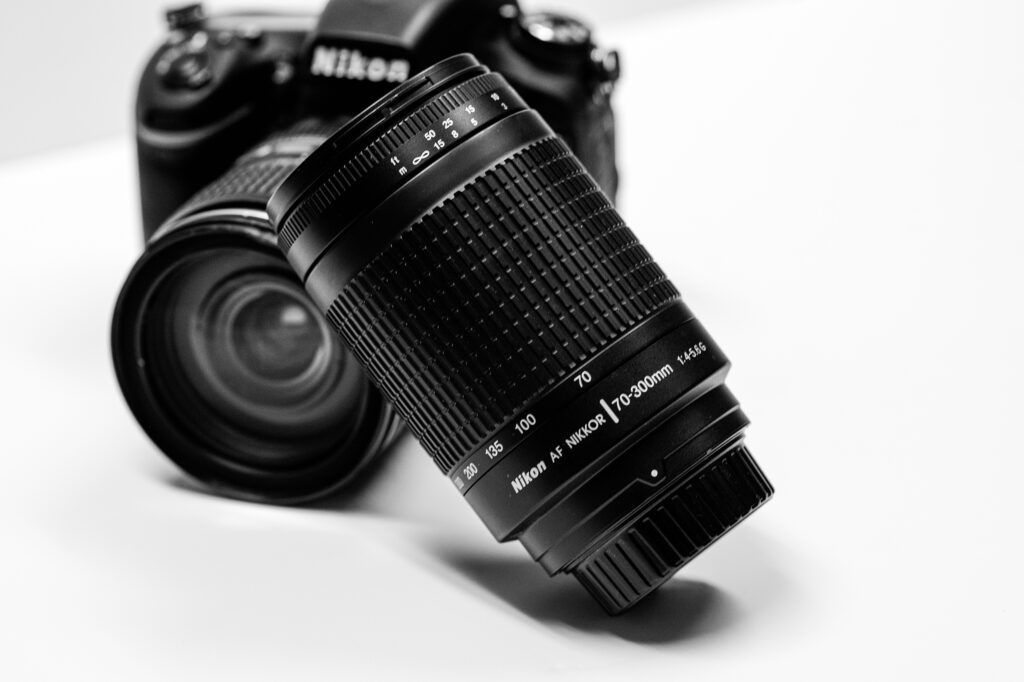
Photograph by Angela Fulks
Selecting the right gear is a fun and exciting part of photography. Variety is the spice of life, and variety in your gear can bring extra spice to your photos! Zoom lenses have a lot to offer us photographers, and discovering their capabilities is a sure way to spice up our images. In photography and with lenses, experimenting and practice are the best way to learn what lenses work best for your needs. Lenses aren’t cheap, and buying a lens to experiment with isn’t always affordable. Be sure to check out if there are any dealers or camera stores in your area that rent out lenses to experiment with.
Self-Check Quiz:
- True or False: Zoom lenses will always allow us to make our subject larger or smaller in photographs.
- What determines our camera’s angle of view?
- What is the focal length measured?
- Where can the focal length of a lens be found?
- Name the most important difference between a zoom lens and a prime lens.
- True or False: There is not a wide variety of zoom lenses on the market.
- What style of shooting can benefit from using a zoom lens?
- True or False: A “kit lens” is not a good lens to practice with when first starting in photography.


